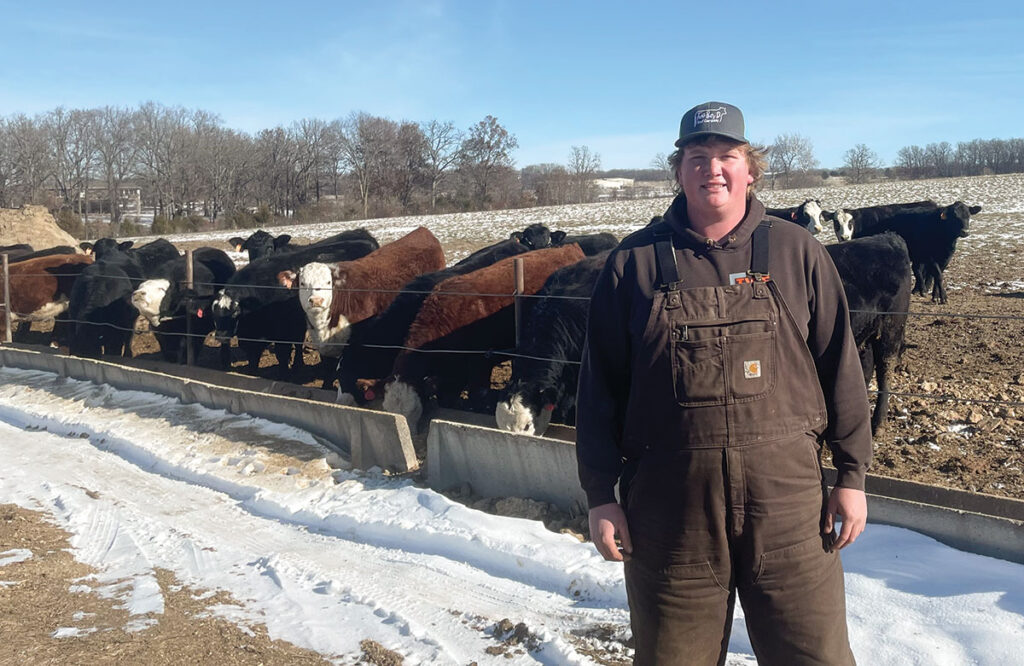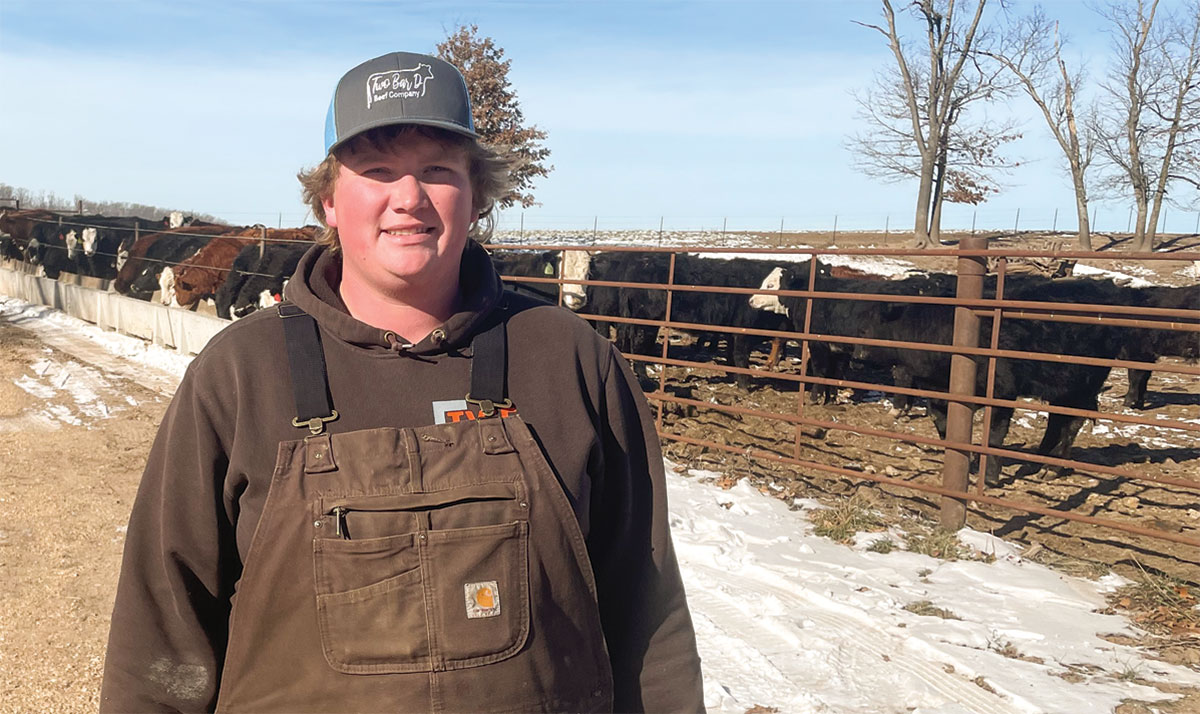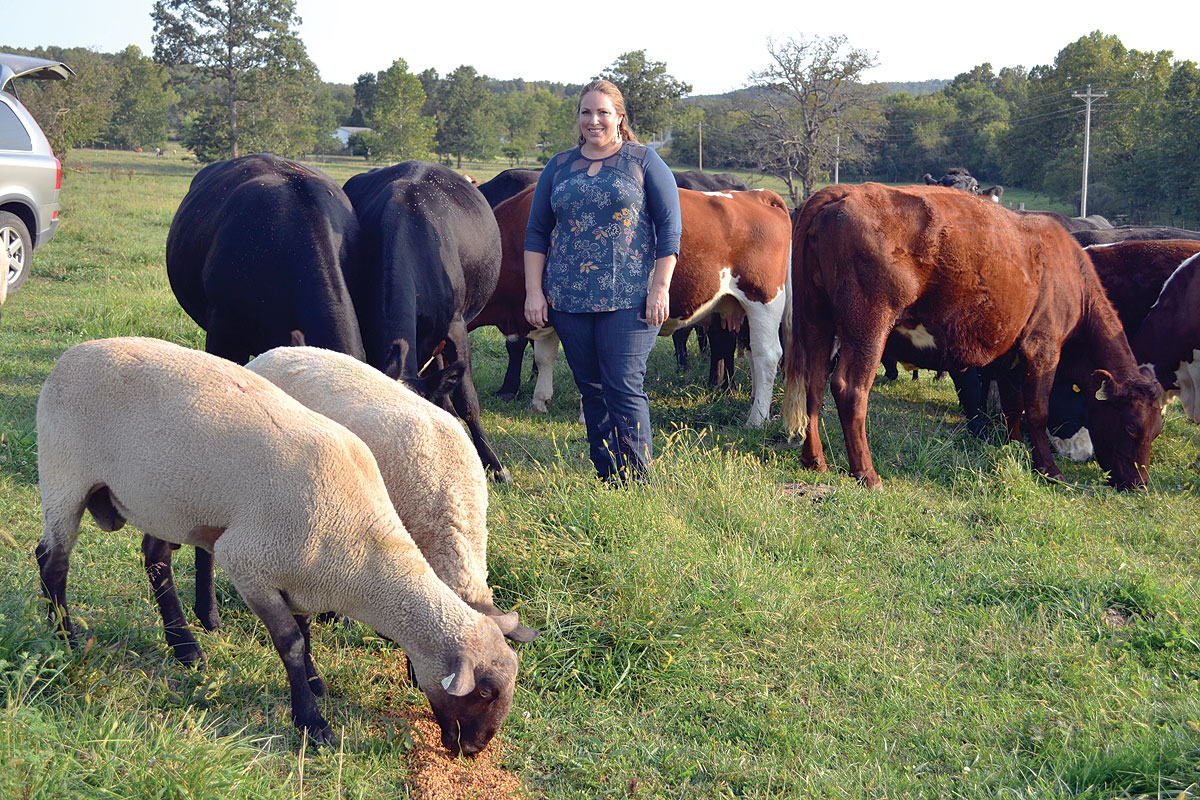
Wyatt Dill found a way to stay on the family farm
NIANGUA, MO. – In today’s farming climate, if a young person wants to keep the family farm alive, they sometimes has to get creative.
That’s what fifth-generation farmer, Wyatt Dill, did when he decided he wanted to stay on the farm.
“We use to just background the cattle to 800 pounds and then took them to the sale barn and got what we got,” 19-year-old Wyatt said.
With four farms in Webster County, near Marshfield and Niangua, Mo., Wyatt keeps about 500 feeder cattle on feed year round. With cows, bulls, replacement heifers and calves, he estimated they have around 1,500 head of cattle. Two Bar D Beef Company is an extension of his parents, Michael and Rhonda Dill’s, farm.
“I give a lot of credit to my dad. He’s been very motivated for the future generation and he’s done a lot to improve the farm and get this going,” Wyatt said.
When Wyatt decided to stay on the farm, they had to find a way to generate more money and to add value to their cattle.
“We’ve accomplished that by taking them from start to finish,” Wyatt explained.
In 2021, Wyatt started selling halves or wholes. In 2022 he started selling retail beef at the Greater Springfield Farmer’s Market. He sold there in the spring, summer and fall, and built a customer base.
“We have a lot of repeat customers. We have a high-quality product and once somebody tries our product, we see them back every week,” he said.
Wyatt said is beef is higher than what one can buy in the store, but it’s also higher quality. It is higher because they have more expense in it. Wyatt recommends people try their retail meat before a half or whole beef.
“We use our retail meat as marketing for our halves and wholes,” Wyatt said. The retail beef is higher because of processing and inspection fees. The halves and wholes are less expensive. Being at the farmers market gives Wyatt an opportunity to talk to people about buying a half or a whole, and getting quality meat in their freezer at an affordable price.
All of the cattle are raised on his farm. “We grain finish them for 180 to 200 days,” Wyatt said. “The way we’re feeding these cattle, it’s really high-quality meat. The marbling is outstanding in the meat.”
He explained he is trying to get people to understand the money-savings and the quality make it the only way to go.
“We have a lot of repeat customers. we have a high-quality product and once somebody tries our product, we see them back every week.”
— Wyatt Dill
“With the grain, finish you just have a tremendous amount of intermuscular fat content, that’s marbling, and you only get that through grain finishing,” Wyatt explained. “Some people say they are grain finished, but have only fed them for 30 days. It takes a while for an animal to deposit that intermuscular fat content.”
So he feeds his cattle for 180 to 200 days and it’s a step program. “Every 10 days they’re getting stepped up until they’ve reached their max step-up. In the end, they are getting about 30 pounds of feed per day per animal, until they’re finished. We can look at them and know when they’re done,” Wyatt explained. The cattle are usually around 18 months old when they’re butchered.
His cattle are raised hormone and antibiotic-free.
“We don’t put any kind of implant in their ear to make them grow. That comes back on us because it takes more feed for them to finish, but also you’re getting a higher-quality product because you have to feed them longer. You’re not pushing these animals. They’re not stressed out,” Wyatt said.
He explained the life of a fat calf is to eat, drink and go lie down; repeat. He wants them as comfortable as possible and tries to bother them as little as possible.
Wyatt has about seven pens and has a fence line feeder set up for these cattle and he has a feed truck.
“Our feed rations consist of corn. We feed whole corn. We feel they do just as good on whole corn as on cracked corn. Whole corn, hominy, and distillers are our main feeds of grain. Our forage is corn silage. Sometimes we feed gin trash, but mainly corn silage,” he said.
Wyatt also raises and sells replacement heifers, which is did prior to venturing into the meat side of the cattle industry.
“We offer about 80 of those for sale each year. We pick our number one heifers for that. We breed them to Angus and Ultrablack bulls. We first started with the Hereford bull and got black baldies,” he said. “We do AI our replacement heifers. We don’t AI any of our cows. We’ve introduced the Ultrablack and Beefmaster bulls, and also have Hereford bulls.”
Wyatt recently graduated from Ozarks Technical College with an associate degree in animal science. Next semester, he will attend Missouri State University and work toward his ag business degree.
“Once I complete that, I’ll be back on the farm and putting that knowledge to work,” he said.







